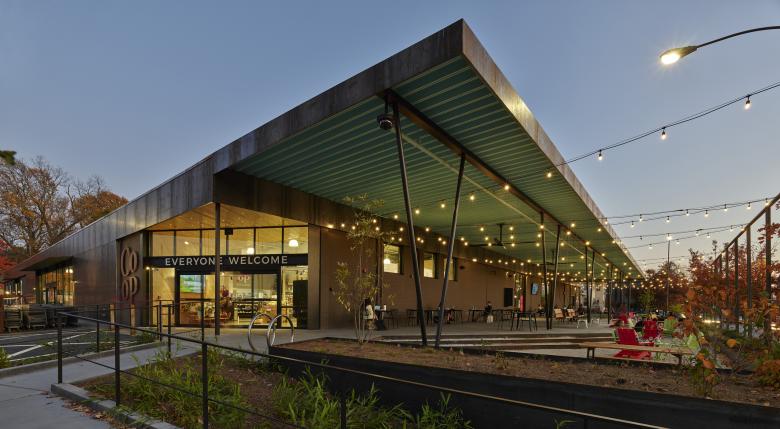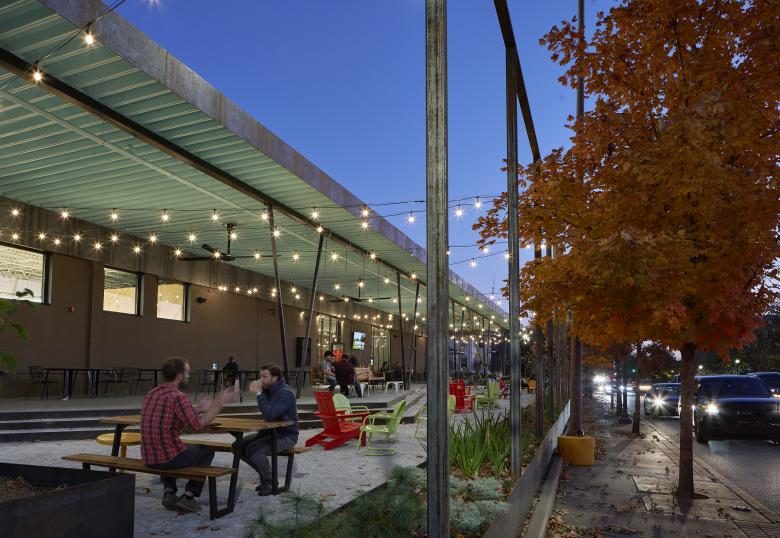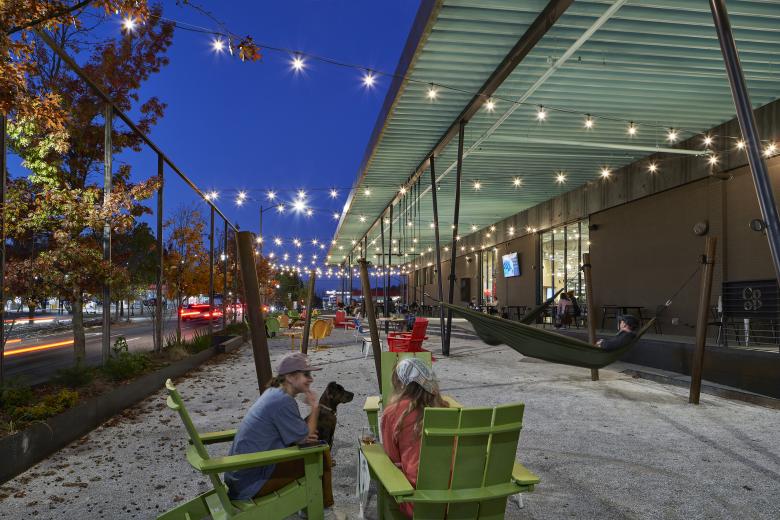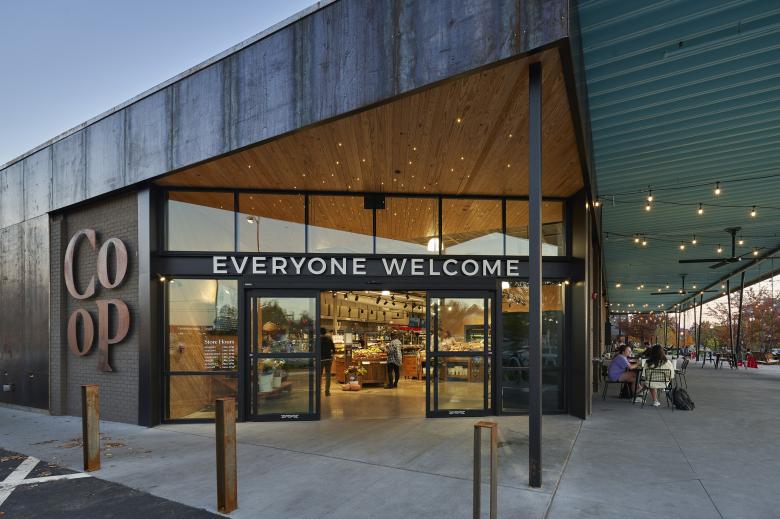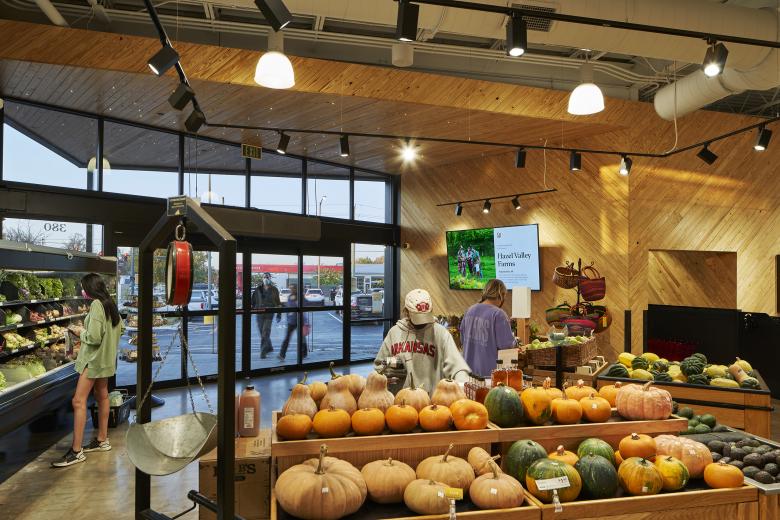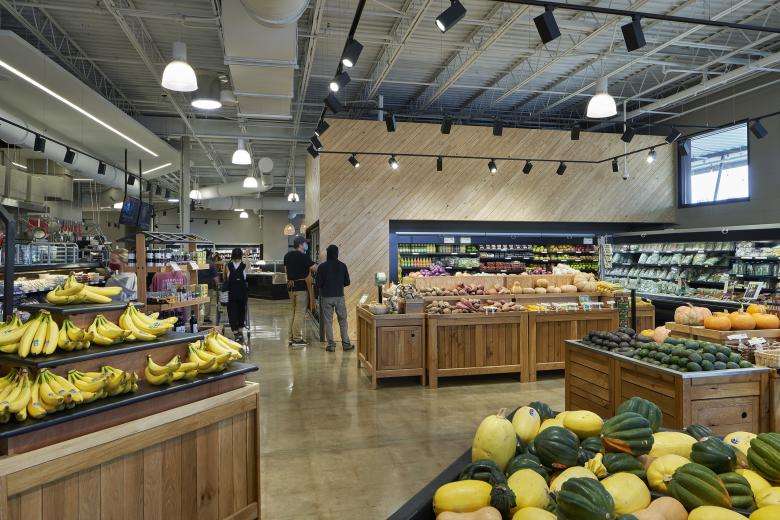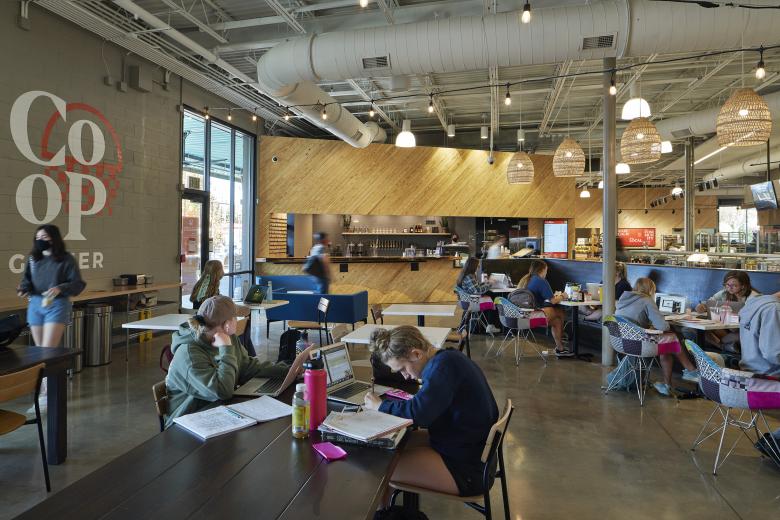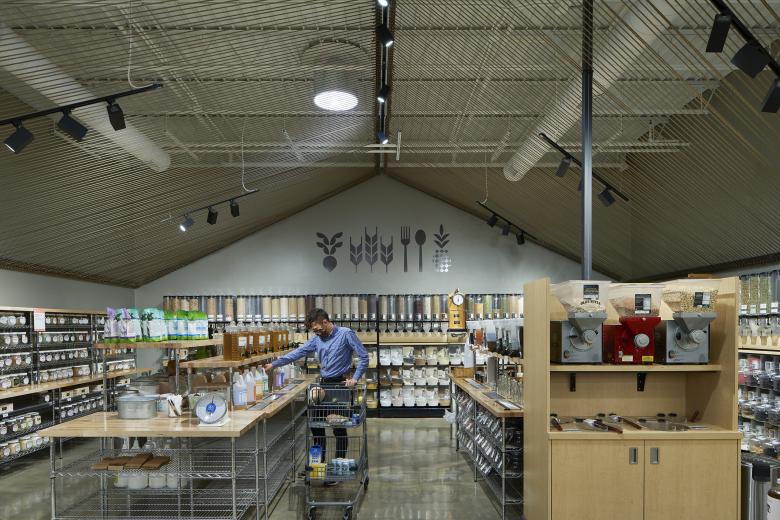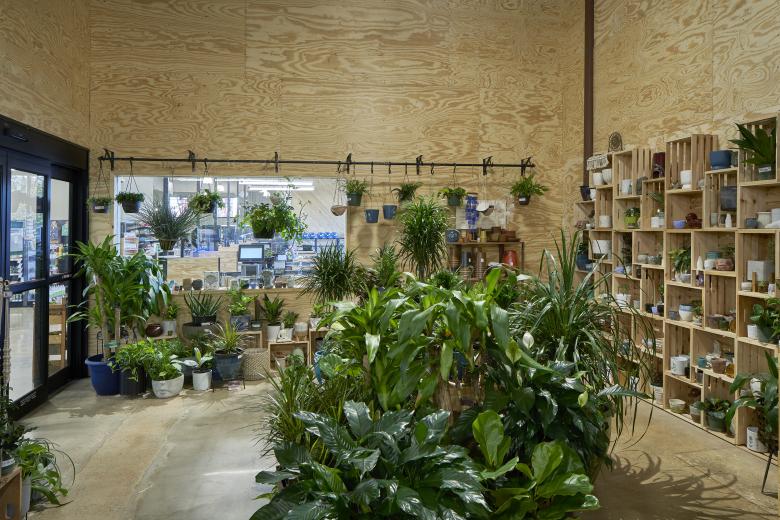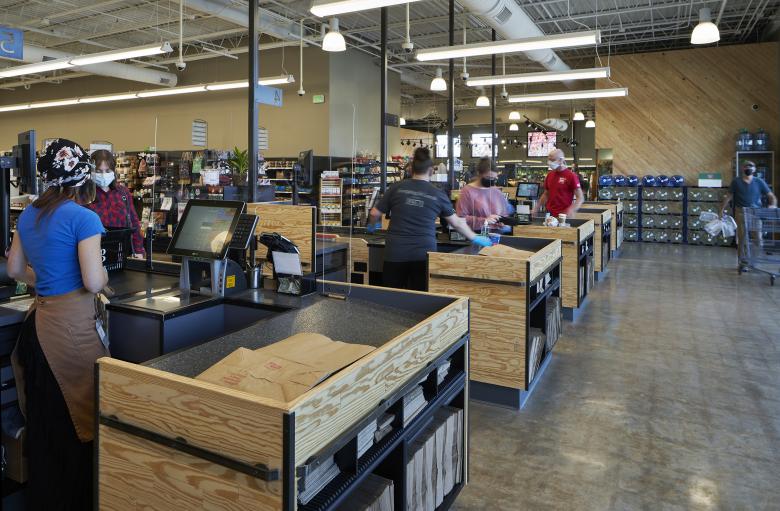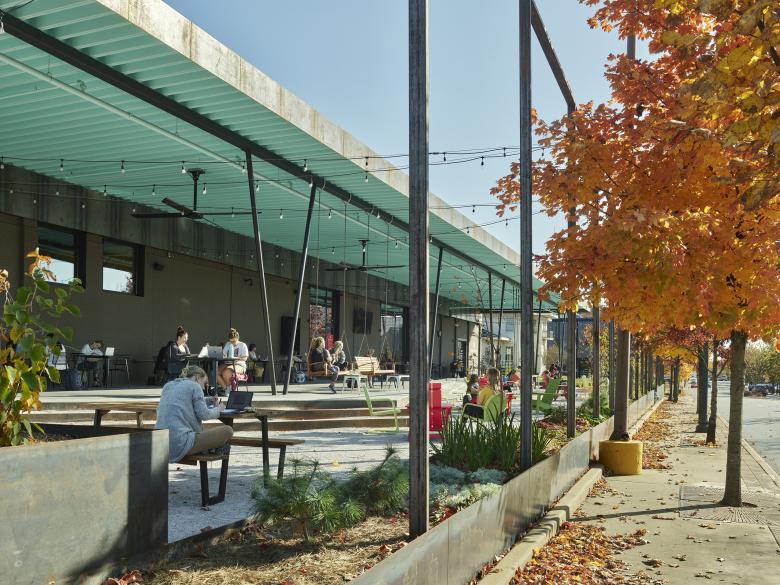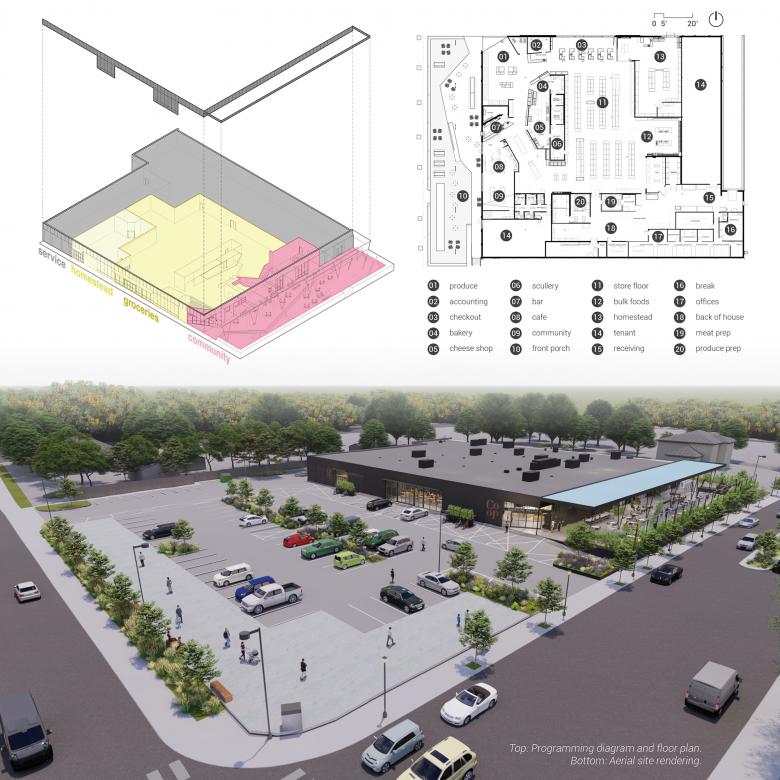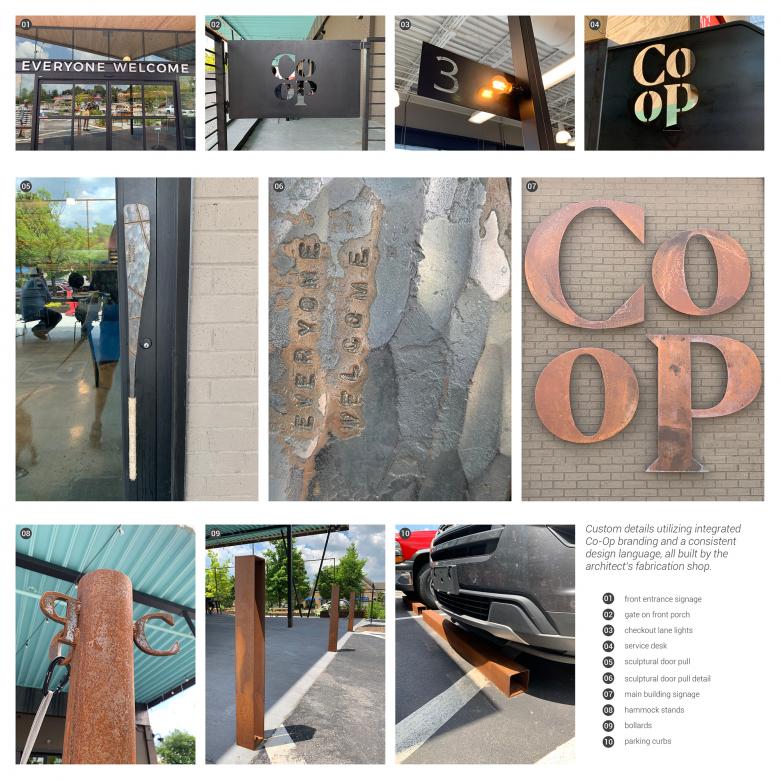US Building of the Week
Ozark Natural Foods Co-Op
modus studio
21. June 2021
Photo: Timothy Hursley
Ozark Natural Foods Co-Op opened last fall inside a former grocery store that sat empty for years. Instead of simply renovating the interior, Modus Studio also put a new facade on the old building, reoriented the entry, and gave Northwest Arkansas the largest porch around. The architects at Modus Studio answered a few questions about the project.
Location: Fayetteville, Arkansas, USA
Client: Ozark Natural Foods Co-Op
Architect: modus studio
- Design Principal: Chris Baribeau
- Project Manager: Leanne Baribeau
- Project Team: Blair Begnaud, Suzana Annable
MEP/FP Engineer: Engineering Elements
Civil Engineer: Bates + Associates
Landscape Architect: Flintlock LAB
Contractor: Nabholz Corporation
Site Area: 2.5 acres
Building Area: 32,400 sf
Photo: Timothy Hursley
What were the circumstances of receiving the commission for this project?Ozark Natural Foods Co-Op, a locally owned grocery cooperative originally formed in 1971, wanted to relocate to this more centralized location in order to better provide the community with healthy, natural, and organic products. Modus Studio was directly approached, due to both their knowledge of the region and experience in skillful and affordable renovations, to reposition this long-time grocery store facility in the hearts and minds of the community and create an engaging example of how adaptation and reuse can be one of the most sustainable decisions a business can make.
Photo: Timothy Hursley
Please provide an overview of the project.The Ozark Natural Foods Co-Op is a reimagined location in a former IGA grocery store building on College Avenue in the heart of Fayetteville. This project exemplifies a sustainable and resilient approach to save an existing building and eliminate a food desert within the community with an option for local, healthy, organic foods and spaces to bring friends, families, and neighbors together along the busy car-centric corridor. To overhaul the mental image of the old building within the mind of the community, the design team first sought to remove the outdated vestibule and move the primary entry to the more visible prominent corner that defines the start of the new front porch. Existing masonry was reused and re-stained while new cladding, in the form of raw steel rainscreen panels, was installed to strike a bold, crisp form that, like the organic products within, would naturally, organically modify with time and exposure to nature’s elements.
Photo: Timothy Hursley
The new 32,400 square foot Co-Op location features a larger farm and garden section and focuses on an expanded food area with flexible indoor seating and strong forms clad in Arkansas-sourced Southern Yellow Pine. Interior spaces, such as bulk foods and health and wellness products, were scaled, shaped, and defined using a simple low-tech installation of hemp rope, and a new 117-foot long covered patio was added for outdoor seating, gatherings, events, and play. A new coffee and taproom featuring local flavors anchors the new Fayetteville front porch. Where once only parked automobiles were occasionally defining the edge, the largest porch in the region now invigorates the street while a robust landscape and series of protective raw steel planters simultaneously protect and define the lively outdoor space. Native vegetation serves as eye-level interest and as a sound buffer between cars and patio patrons.
Photo: Timothy Hursley
What are the main ideas and inspirations influencing the design of the project?The renovation rethinks the modern community food co-op. The team at Ozark Natural Foods knew that shoppers were shifting away from the typical weekly grocery list shopping trip, and instead were moving more toward multiple short trips. Capitalizing on this, as well as the new, more centralized location, the new design was developed as a community hub model to be inviting to older long-term customers, as well as enticing to younger, college-aged shoppers at the nearby University of Arkansas. The building physically exemplifies the sign on the front door that reads “EVERYONE WELCOME.”
Photo: Timothy Hursley
How does the design respond to the unique qualities of the existing building?The existing building was essentially an empty box that formerly housed a grocery store chain that had been limping along for decades. The building and parking lot sat empty for months, giving off food-desert vibes in this very central location between residential, university campus, and downtown commercial areas. The design team first sought to remove the outdated vestibule and move the primary entry to the more visible prominent corner that defines the start of the new front porch. The 117-foot long porch takes advantage of the building’s high traffic location, acting as a welcome sign, and drawing people in to enjoy healthy, natural, and organic foods together as a community.
Photo: Timothy Hursley
What products or materials have contributed to the success of the completed project?The success is in the details and in the low-cost design approach. The architect's own fabrication team built numerous custom elements of the building, including bike and scooter racks, a beer tap system, a live-edge wood slab bar top, sculptural door pulls, and an array of patio furniture components. Resolution at the detail of the hand and repositioning this building at the scale of the community created a complete transformation for the entire city and the individual customer experience.
Email interview conducted by John Hill.
Photo: Timothy Hursley
Photo: Timothy Hursley
Photo: Timothy Hursley
Photo: Timothy Hursley
Image: modus studio
Image: modus studio
Related articles
-
AMFA Nears Completion in Little Rock, Arkansas
on 10/21/22
-
Arkansas Museum of Fine Arts
on 1/6/22
-
Ozark Natural Foods Co-Op
on 6/21/21
-
Green Forest City Hall + Police Department
on 10/19/20
